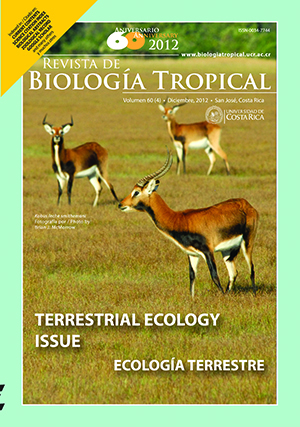Abstract
Jatropha curcas belongs to family of Euphorbiaceae, and is an important biological tree species for diesel production. The current descriptions of the phenotypic traits for male and female flowers are not com- prehensive and there have been no reports about the process of J. curcas from pollen germination on stigma to pollen tubes conducting fertilization after entering the ovary and ovule. To assess this, experiments were under- taken to study the reproductive biology characteristic of J. curcas in Guiyang Guizhou Province, China. Floral structure and pollen germination process were described in detail and the breeding system was determined. The results showed that flower of J. curcas was both unisexual and monoecious, with a flowering phase between April-November. Both female and male flowers have five petals in contorted arrangement and five calyxes in imbricated arrangement. Female flower originated from bisexual flower finally formed unisexual flowers as the stamen ceased growth in different period. The pistil had 3-5 styles, connected at base and separated into 3-5 stigmas on the top. Each stigma had 2-4 lobes. The styles were hollow. The pollen germinated on the surface of the stigma, is then transported via the vascular tissues, which was arranged in bundles, and finally channeled through the micropyle to enter the blastula. The pollen tube was shaped in a long uneven cylinder. The top end of it became swollen and formed a small round hole for the purpose of releasing sperm nuclei while the pollen tube itself was growing and extending. Estimation of out-crossing index and artificial pollination experiments indicated that J. curcas was capable of both self-pollination and cross-pollination. The germination speed of the pollen on the stigma did not differ so much between the one by self-pollination and the one by cross-pollination, and the pollen from the two different sources could both reach the ovary within one day. Both artificial pol- lination test and out-crossing index have indicated that: J. curcas has both self-pollination and cross-pollination systems.##plugins.facebook.comentarios##
Downloads
Download data is not yet available.


